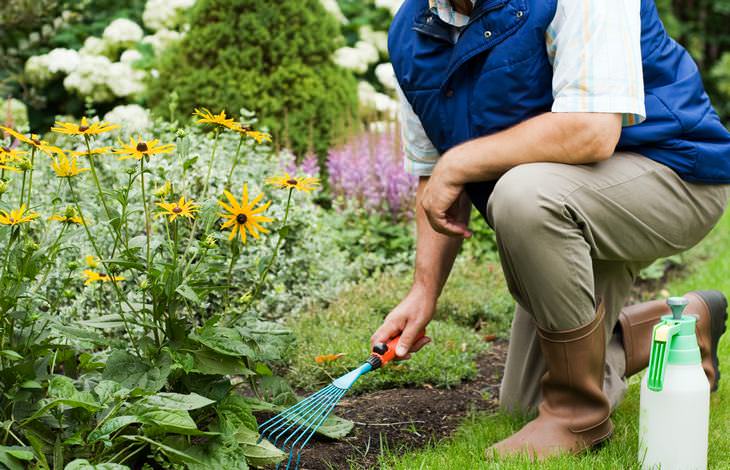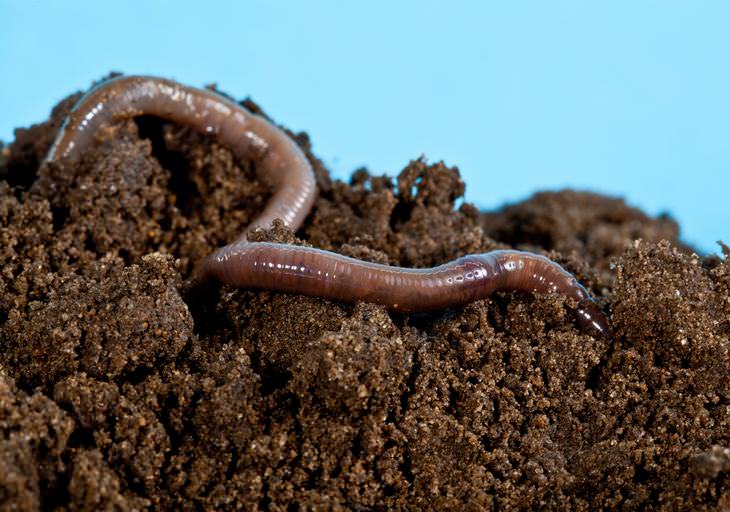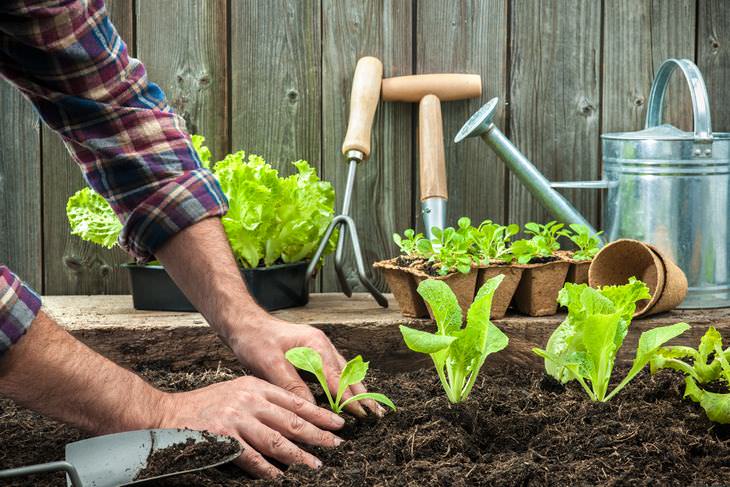

1. Structure and Tilth
Be sure to check the graininess of your soil by making sure that it allows for free movement of air, water, organisms, and nutrients. This is best done when the soil is not too dry or wet. Dig down into the dirt, about 6-10 inches and scoop out a section that's the size of a soup can. Squeeze the soil with your fingers noting how much pressure is needed to crush the crumbs.
You can also wet some the same soil with a couple of squirts of water and do the squeeze test again. You want the grains to retain their shape whether wet or not. If the soil doesn't break it's in excellent condition. If there is a little breakage than you have moderately good soil. But if it completely crumbles, this is not the type of soil quality you want.
2. Compaction
Compacted layers of soil will restrict plant growth by inhibiting the movement of air, water, and food. Check for compaction by sticking a wire flag into different parts of the soil bed. Pay attention to when it bends or stops. You want at least a foot of penetration so that the roots can grow freely.
3. Workability
You also need to check if the soil breaks up evenly allowing for water to flow and easy movement. This will also let you know how to avoid compaction. Then, run a tiller through the soil multiple times assessing how much energy you have to exert. This indicates workability. What you want is minimal to a low-medium amount of energy and soil, which should be easy to till. If it requires too much to till, your seedbed is probably not a good candidate for what you want to plant.

4. Organisms
The organisms in your soil help dirt flourish. Whether microscopic or not, you want to have most of them there. Dig in at least 1/2 foot into the soil. Scan the soil for 2 to 4 minutes looking for insects and other tiny creatures. If you have a magnifying glass or fancy microscope, all the better. To get a great variety, have at least 4 kinds of organisms in multiples. If this is not possible you can get away with two different kinds for your need. But anything less won't do.
5. Earthworms
Earthworms help break down plant material while also keeping the soil nourished. At least three present in a shovelful of dirt is okay, while five or more is ideal.
6. Plant Vitality and Vigor
Take a look at what is already growing out of the ground and notice if it's healthy. Look at the color, pest infiltration, or signs of diseases on the plants - that includes weeds, growing out of your soil section. Notice if they are stunted and if they are even. If they look healthy, you are ready for your next crop, if not, you will need to nurture that soil a bit.

7. Root Growth
Roots getting enough moisture, nutrients, air, and organism love will thrive and that's a sign of great soil. Using a trowel dig around the base of the plant, examining the depth of its roots, color and root structure. Fine roots that extend into the dirt are what you need to be on the look for. Dry, mushy or a handful of roots indicate poor soil or compaction issues.
8. Water Penetration
Is your soil porous enough for water to flow through it freely? Notice the state of your soil after it rains to see if water pools on top of it or if it gets absorbed easily. Too much runoff or water sitting on top of the dirt can indicate poor infiltration. Should there be no pooling after 24 hours then it is ideal, but if it takes up to three days for the water pooling to disappear you have moderately good soil. Anything that goes beyond that indicates that your soil probably will not funnel water properly.
9. Water Availability
Good soil structure will enable water to be held in its pores making it available to plants in between irrigation sessions or rains. This needs to be tested by actively checking plant growth following their exposure to water. Notice if plants do well in between watering sessions, or if the water evaporates too quickly. An indication of good soil is when your plants are getting enough to hold them over until the next rain or watering. The exception would be extremely hot weather conditions.
Rich soil will ensure that your plants are getting everything they need, and with the aid of these tests, your setup is the healthiest for your garden.
Gardening Tips: 11 Ways You May Be Messing up Your Garden
Test The Health of Your Garden with These Tips
25 Ideas How to Recycle Old Furniture
10 Best Evergreen Ground Cover Plants
Get Rid of Pests With These Organic Pesticides